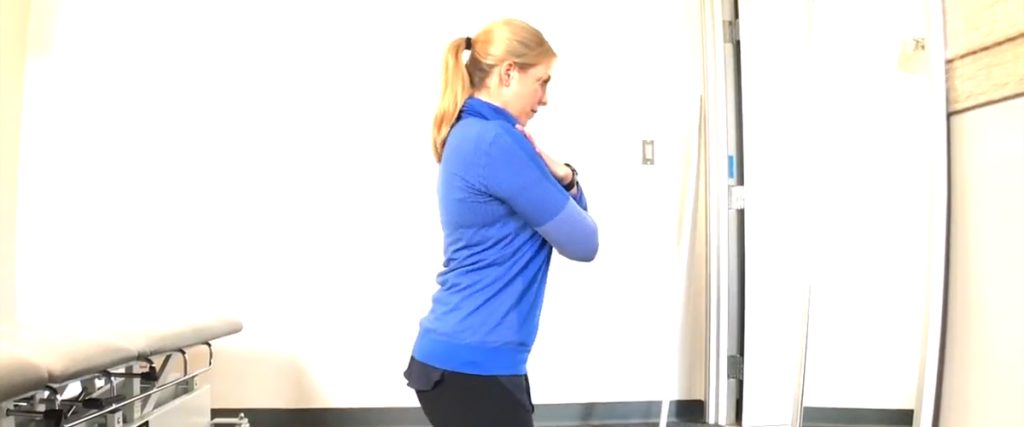The deadlift is sometimes seen as an intimidating lift, especially concerning back safety. But, when done correctly, it is actually a great exercise for the back muscles AND the glutes, hamstrings, and quads, all to varying degrees, depending on what variation you do.
If you’ve been wanting to learn how to properly deadlift, look no further! The first video of exercises shows the way to start “grooving” the proper movement patterns and begin building your capacity to eventually lift heavier loads with the traditional deadlift and the advanced variations that you’ll see in the second video.
1. Kneeling Hip Hinge:
Begin on your knees with your arms crossed over your chest. Slowly lower your hips down toward your heels as you slightly lean trunk forward. To get back to the starting position, squeeze your glutes and lift your chest upright again.
This exercise helps to get your body acquainted with the hip hinge movement which is paramount to performing the deadlift efficiently.
2. Standing PVC Assist Hip Hinge:
Throughout the movement, keep a neutral spine alignment, making sure the PVC pipe has three points of contact: back of the head, between shoulder blades, and tailbone. Standing with your feet about hip width apart and a slight bend in your knees, slowly send your hips backward and your chest forward. Stop when you feel a slight stretch in your hamstrings or when your chest has reached parallel to the ground. Squeeze your glutes to stand back up.
3. Dumbbell Romanian Deadlift (RDL):
Holding dumbbells in your hands, feet about hip width apart, and knees slightly bent, send your hips back into a hip hinge. You should be sliding the dumbbells down the front of your thighs and keeping your knees stacked over your ankles. Stop when you feel a stretch in your hamstrings or when your chest is parallel with the ground, then squeeze your glutes to return to standing.
4. Kettlebell Deadlift:
Standing with your legs wider than hip width, hold a kettlebell in front of you between your legs. Your knees should remain just about over your ankles as you send your hips back into that hip hinge while simultaneously bending your knees, lowering kettlebell straight down between your feet aligned with arches. As you can see in the video, your trunk should be leaning forward slightly, but your shins should remain relatively upright. As always, squeeze those glutes to stand back up!
Once you’ve mastered these moves, you will be ready to move on to the Trap Bar Deadlift, and Barbell Deadlift variations!
Here are 3 of our favorite ones. All of these variations will work the core muscles of the body; lower back, glutes and abdominals, as well as the hamstrings and quads, each to different degrees. Pick your poison!
1. Trap Bar Deadlift – This variation of the deadlift keeps the load closer to your center of mass and is an excellent first step in using a bar and beginning to lift heavier loads. It allows sharing the load between hips, low back, and quads more equally compared to the conventional deadlift, and you’ll get the benefit of strengthening all three!
2. Barbell Sumo Deadlift – The sumo variation is a good option if your hip structure and mobility make you more comfortable rotated outward when pulling, or if you have limited ankle mobility. It also simulates a strong athletic position on the field or court (think short stop or linebacker stance), and “real world” lifting posture like if you were to help lift a couch — assume the sumo! This variation will fire up the posterior chain, but can be slightly less load to the low back than the traditional deadlift, (but more than the trap bar), and like the trap bar, will also get quads, and will be a shorter range of motion to pull than the traditional deadlift.
3. Barbell Romanian Deadlift (RDL) – The Romanian Deadlift, or RDL for short, is the traditional variation and it will work the back extensors, glutes and hamstrings more than the quads, AND more than the other variations. As an added bonus, it can help with hamstring tightness as it requires a lengthening of the hamstrings during the lowering phase.
If you’d like to learn these progressions with an Elevate trainer, send us an email at concierge@elevateptfit.com.

